#usa native plants
Explore tagged Tumblr posts
Text
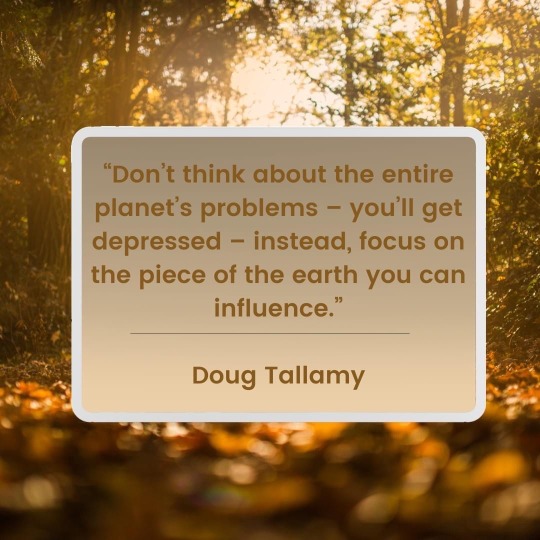
I'm so glad Doug said this because this is exactly how I see the world these days.
#nature#environment#pollinators#usa native plants#native plants#save the bees#midwest#birds#homegrown national park#backyard wildlife#doug tallamy#saving the environment#environmental destruction#climate disruption#climate change
27 notes
·
View notes
Text
youtube
Rahway, New Jersey, faces major environmental challenges—poor air quality, urban heat, and polluted waterways—all made worse by limited tree cover. But change is happening.
✅ Subscribe to One Tree Planted: https://bit.ly/2IsCtqc
🌳 Plant Trees: https://onetreeplanted...
In this mini-documentary, we explore how Groundwork Elizabeth, backed by local leadership, is transforming the city with over 400 newly planted trees and an innovative Miyawaki microforest in Grover Cleveland Park. 🌱 This densely planted, fast-growing forest will restore biodiversity, improve air and water quality, and provide hands-on environmental education for local students.
🌲 About One Tree Planted:
One Tree Planted is a 501(c)(3) non-profit organization and we plant trees! We are a tree planting charity with a goal: to make it as simple as possible for anyone to plant trees.
#One Tree Planted#solarpunk#miyawaki forest#micro forest#Rahway#new jersey#USA#Grover Cleveland Park#native plants#native trees#native species#Merck#urban forest#Youtube
15 notes
·
View notes
Text
My Garden Flowers Part 9
All photos mine.










In order of appearance:
241. Wild Yam (Dioscorea villosa) Not pictured as she hasn't flowered yet.
242. Nodding Wakerobin (Trillium flexipes) Not pictured as she hasn't flowered yet.
243. Moss campion (Silene acaulis) Not pictured as she hasn't flowered yet.
244. Great White Trillium (Trillium grandiflora) Not pictured as she hasn't flowered yet.
245. Yellow Wood-Sorrel (Oxalis stricta) Small yellow flowers. You often find them growing as weeds, but they're native at least to the northern USA bordering southern Ontario. The leaves, flowers, and fruits are a very lovely snack, with a tart refreshing flavour.
246. Horseweed (Erigeron canadensis) A fairly common garden weed, but native so she can stay where she pops up from time to time. Not pictured as I haven't got pictures.
247. Stiff Goldenrod (Oligoneuron rigida) Not pictured as I haven't got pictures yet.
248. Fourflower Loosestrife (Lysimachia quadriflora) Not pictured as she hasn't flowered yet.
249. Smallflower Forgetmenot (Myosotis laxa) At least I think. Her flowers are certainly much smaller than the European pink and blue species I see around. Not sure what else she'd be.
250. Bearberry (Arctostaphylos uva-ursi) Not pictured as she hasn't flowered yet.
251. Tall Meadow-Rue (Thalictrum pubescens) Yet more lacy white flowers! I imagine if you preferred white you could have a full native garden of such.
252. Northern Bog Violet (Viola nephrophylla) Not pictured as she hasn't flowered yet.
253. Wool Grass (Scirpus cyperinus) Not pictured as she hasn't flowered yet.
254. Prairie Milkweed (Asclepias sullivantii) Not pictured as she hasn't flowered yet.
255. Square-Stemmed Monkeyflower (Mimulus ringens) More leggy than her yellow cousin, but still very attractive flowers that look a lot like snapdragons. She needs things moist.
256. Pawpaw (Asimina triloba) Not pictured as she hasn't flowered yet.
257. Meadow Sundrops (Oenothera pilosella) Not quite as intensely yellow as her cousins, Oenothera biennis and Oenothera fruticosa, but still very bright.
258. Wood Lily (Lilium philadelphicum) We don't have a ton of red or orange flowers native here as compared to yellow, white, or pink/purple flowers, so each one is a treat.
259. Virginia Waterleaf (Hydrophyllum virginianum) Yet more lacy white flowers! Not complaining, though, I think they're lovely in the garden. You find these growing in shaded woods.
260. Woodland Strawberry (Fragaria vesca) Unlike her cousin in the front, this one produces lots of berries...but they're white! That's not usual for the species but not unheard of. It's kind of fun to pick little white strawberries each year from that patch.
261. Pickerelweed (Pontederia cordata) Not pictured as she hasn't flowered yet.
262. Bog Rosemary (Andromeda polifolia) This is a cultivar. I will have the wild type one day.
263. Strict Blue-Eyed Grass (Sisyrinchium montanum) Her cousin in the front prefers things dry, but this one, like many members of her family (irises), prefers things moist. It was actually easier to get her to take than the dry one, though, which I had three failed attempts at before the one I planted last year.
264. Downy Yellow Violet (Viola pubescens) Not pictured as she hasn't flowered yet.
265. Purplestem Angelica (Angelica atropurpurea) Not pictured as she hasn't flowered yet.
266. Wrinkleleaf Goldenrod (Solidago rugosa) Not pictured as she hasn't flowered yet.
267. Purple Giant Hyssop (Agastache scrophulariifolia) Not pictured as I haven't got pictures yet.
268. Buffaloberry (Shepherdia canadensis) Not pictured as she hasn't flowered yet.
269. Silverberry (Elaeagnus commutata) Not pictured as she hasn't flowered yet.
270. White Lettuce (Nabalus albus) Not pictured as she hasn't flowered yet.
#blackswallowtailbutterfly#my photos#photography#my garden#garden flowers#native plant gardening#native flowers of Carolinian Canada and USA
13 notes
·
View notes
Text

I know what you're thinking—you want to know who Ruth is. Well, I'll tell you........ we forgot. Sorry.
Ruth's Golden Aster (Pityopsis ruthii)
Tennessee, USA
Status: Endangered
Very small population
Only occurs in one county
I don't know who Ruth is.
#flower#plant#wildflower#endangered flowers#native flowers#floral art#botany#north america#usa#tennessee
12 notes
·
View notes
Note
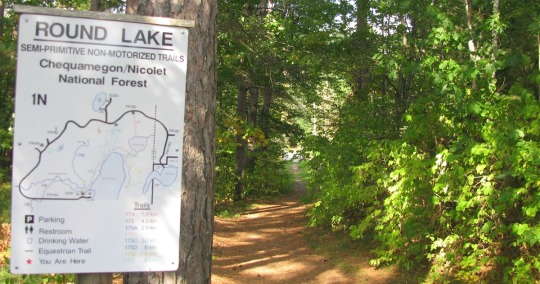
Chequamegon-Nicolet National Forest
(Shuh-WAH-muh-guhn)
Park Falls, Wisconsin, United States
#have you been here#poll#usa#submitter notes: The Chequamegon–Nicolet National Forest is a 1#530#647-acre U.S. National Forest in central and eastern northern Wisconsin.#The forest consists of desiduous and coniferous trees. This includes three types each of maple‚ birch‚ and oak trees‚ as well as aspen‚#beech‚ basswood‚ and sumac (which is related to the cashew plant). There's also 3 types of pine tree‚ white spruce‚ balsam fir‚ and eastern#hemlock.#The area is home to many forageable fruits‚ plants‚ and mushrooms‚ and has benefitted from the reintroduction of elk and wolves.#There are recent sightings of moose and pine marten in the area‚ and this is attributed to conservation efforts and native animal population#growth.#The wide variety of animals are protected from hunting in this year round recreation destination‚ where visitors can camp‚ hike‚ fish‚ cross#country ski‚ and snowmobile.
15 notes
·
View notes
Text
Millions of Wildflowers Now Delight the Communtiy Where Vermont Couple Used to Spend All Day Mowing Grass https://www.goodnewsnetwork.org/millions-of-wildflowers-now-delight-the-communtiy-where-vermont-couple-used-to-spend-all-day-mowing-grass/
#good news#wild flowers#wildflowers#native plants#environmentalism#science#environment#vermont#usa#nature#rewilding#ecology
7 notes
·
View notes
Text

3 notes
·
View notes
Text

Amsonia ‘Storm Cloud’
Amsonia (Blue Star), has been around for a long time. Perhaps it’s Amsonia hubrichtii, native to Oklahoma and Arkansas, which is best known for its brilliant fall color and needle-like leaves. Amsonia tabernaemontana covers the most ground with its natural habitat — as far south as Florida all the way up to New York.
1 note
·
View note
Video
youtube
Power Up Your Immune System with Echinacea | Get Restful Sleep | Immune ...
#youtube#Echinacea - the PurpleConeFlower is a native plant all over the USA that you often see growing in the roadsides. It is an old her and has m
0 notes
Text
looking up information for a plant and then found a database that has information on said plant only to find that of the few websites cited is three cites that I myself have already used to try and ID this plant 😵💫
#marten's talkin#no pictures#no artwork#im struggling as-is to conclusively and confidently ID this plant because theres another plant floating around online#that looks just about the same to me#i think the difference in species may have something to do with their native habitats. both like “dry subtropical environments”#but one of them is native to the southern USA while the other one is introduced (according to KEW or whatever its called)#but native to the carribean and the northern parts of South America (Paraguay and “up”)#anyways i guess :')#back to it
0 notes
Text
Here we go again with another Illinois “Prairie State” prairie about to be lost. Don’t let what happened to Bell Bowl Prairie happen here. Please help!
“A prairie in Monroe County, Illinois, is about to be lost forever.
Less than 1% of Illinois’ prairies are left in our beautiful prairie state – and only 600 acres of hill prairies (i.e., prairies on bluffs like this one) remain. That’s smaller than New York’s Central Park.”
#save a prairie#Illinois#prairie lovers#prairie state#usa native plants#pollinators#native plants#environment#midwest#save the bees#birds#nature#insects#prairie#seeking prairies#conservation#please donate
5 notes
·
View notes
Text
All of this is good. I regularly see butterflies launch from the various dozens of native trees in my yard. Read Doug Tallamy’s books and check out Homegrownnationalpark.com
Tree stuff
Most trees should outlive you. If a landscaper tells you the lifespan of a tree is 10 years, they don't know what they're talking about.
Trees are free. Carefully comb over your yard for baby trees, especially in mid-spring!
Similarly, If you live near a gravel driveway or gravel parking lot, you can find baby tree sprouts that can be easily transplanted by gently removing the gravel bits from around the roots, wrapping the roots in wet paper towel, and transplanting to a large pot.
Do not pile up mulch around the base of a tree. You can mulch under the tree, but it should be a mostly flat layer, not a raised mound, and keep the mulch a few inches away from touching the trunk. Roots need some access to air or the tree will grow roots upward through the mulch, and the roots will slowly wrap around the trunk and strangle the tree to death. It's called root girdling and it is very sad.
Trees need friends!!! If possible, plant two or three trees instead of just one. Trees share nutrients through the mycorrhizal network and they protect each other from storm damage.
Always get a tree that is native to your area and suited to your local environment.
Growing an oak from an acorn is easy. Go to an area where there are oaks in the fall, and collect the acorns that have turned brown and whose hats have popped off. Get large pots at least 8 inches depth, and lay the acorns on their sides on top of the potting soil, then cover them with a layer of damp fallen leaves, and leave them outside all winter long. Just be sure to cover them with some wire mesh or something to protect them from squirrels
Please keep oaks and other large trees about 20 feet from any structure because they will grow huge. Websites will tell you to keep trees X distance away from "structures or other trees" but other trees can go as little as 6-10 feet apart whereas structures need to be like 15 feet away minimum, generally speaking
Prune the tree while it's dormant, NOT in the middle of summer!
If you happen to be from the Eastern United States, please consider getting an oak! They are keystone species and host plants for literally hundreds of insects. We have too many maples here too, so maybe consider a Sweetgum or Black Gum for pretty fall colors?
If you have a tree that's tied to a stake to keep it upright, get rid of that thing as soon as you can, particularly if there's zip ties holding it to the tree, because those can grow into the bark and kill the tree...
If your tree is dead, please consider cutting off the branches and leaving at least 6-10 feet or so of trunk standing. Dead tree snags like this are important nesting places for many birds and you might see a woodpecker
If you live in North America, whatever you do, do NOT get anything marketed as an "ornamental flowering pear tree." They're typically Pyrus calleryana, and they're virulently invasive
Bugs eating a few holes in the leaves of your tree? Good for them! (They aren't hurting the tree unless they're like, fully skeletonizing it, and they're just the caterpillars of butterflies and moths. Want Luna moths or Tiger Swallowtail butterflies? Let the caterpillars eat their dinner mmkay.)
Don't throw away the fallen leaves! Butterflies, moths, stick bugs, lightning bugs, ladybugs, and many other insects hibernate the winter in the fallen leaves. Use them as mulch for flower beds, compost them, or just leave them alone! You'll probably want to stop mowing after the leaves fall if you'd like to see bugs.
#trees#oaks#nature#tree stuff#environment#pollinators#usa native plants#native plants#butterfly#tree care#yard habitat
8K notes
·
View notes
Text
youtube
Healing Forest, SUGi’s first short film, tells the story of an unprecedented collaboration between SUGi and the Yakama Nation community. This short film brings the forest's remarkable growth and nourishing power to life.
As you watch the film, you enter the forest and become part of a movement to partner with Tribal communities to weave a renewed sense of healing and possibility across the First Nations of the United States.
SUGi Forest Makers:
Ethan Bryson @naturalurbanforests & MaryLee Smunitee Jones @smunitee
Director: Brad Abrams
DOP: Brad Abrahams, Cody Cobb & Ryan McMackin
Photography: Cody Cobb, Stephanie Hsie & Ryan McMackin
Production Assistant: Adam Whitley
Editor: Camille Durand
Produced: SUGi
Titles: SUGi
Forests Partners: Breitling, Tiger Global Impact Ventures, Life_Time_Foundation, AllBirds x Voice for Nature
iDig2Learn x ROIC x The Lenape People
Special thanks to: Joelle Jones, Chief Vernon Alvarez and the The Yakama Nation
Everyone who has contributed to the planting, the film, the drawing class & the swan dances. Thank you for joining us in healing the soil.
#SUGi#solarpunk#USA#indigenous peoples#first nations#Yakama Nation#Miyawaki forests#reforestation#native plants#indigenous plants#Youtube
8 notes
·
View notes
Text
Virginia Bluebells (Mertensia virginica)
Blue flowers are relatively rare. Most incline to violet or else are quite small. But Virginia bluebells are a striking exception. All my photos from my garden, unedited.
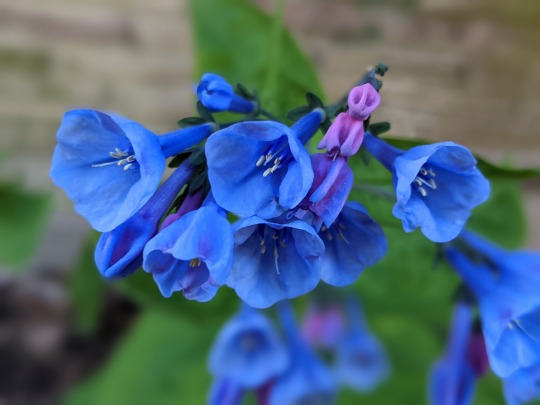

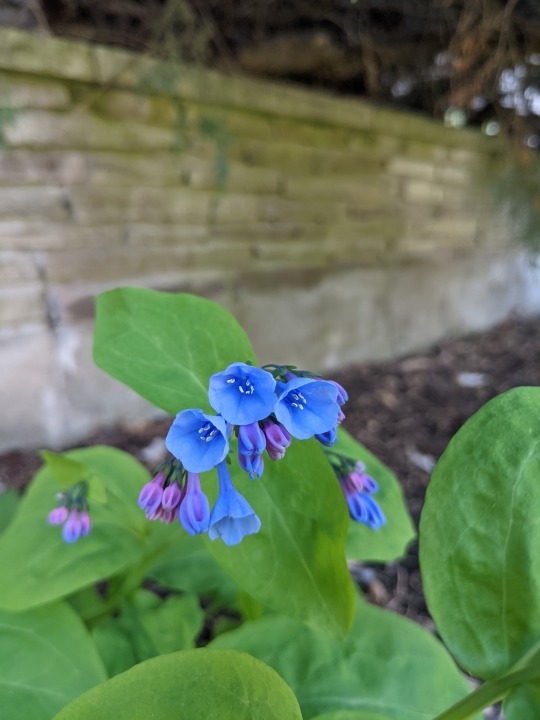
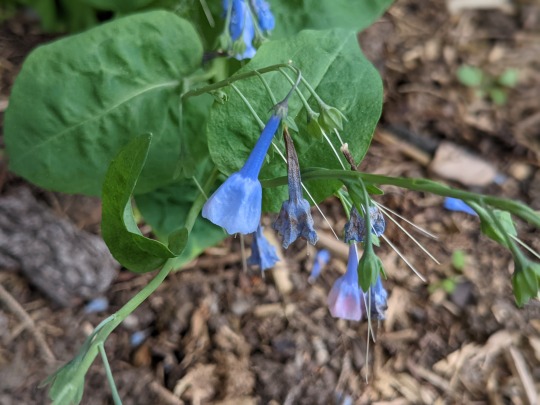
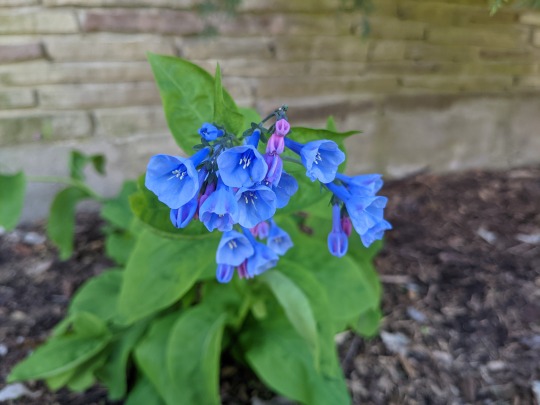
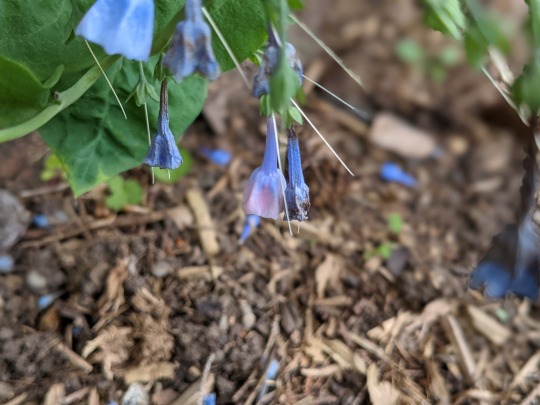
I'm not kidding. They really are that blue naturally. They bloom in May. Then they slowly decline and the entire plants are gone above soil by the summer. Only to reappear the following spring! The shoots and flower buds are edible. You don't want to take too much, though. As spring ephemerals, they need the energy they make with their leaves during their short growing period. The short bloom period is also why I don't have more photos of them. They don't even bloom every year.
#photography#my photos#blackswallowtailbutterfly#Virginia bluebells#Mertensia virginica#flowers#blue flowers#wildflowers#gardening#native species#North American native plants#edible wild plants#my garden#native plants of Ontario and the northeastern USA#spring ephemerals
24 notes
·
View notes
Text
Golf Courses ARE Being Converted
The Solarpunk "fantasy" that so many of us tout as a dream vision, converting golf courses into ecological wonderlands, is being implemented across the USA according to this NYT article!
The article covers courses in Michigan, Pennsylvania, California, Colorado, and New York that are being bought and turned into habitat and hiking trails.

The article goes more into detail about how sand traps are being turned into sand boxes for kids, endangered local species are being planted, rocks for owl habitat are being installed, and that as these courses become wilder, they are creating more areas for biodiversity to thrive.
Most of the courses in transition are being bought by Local Land Trusts. Apparently the supply of golf courses in the USA is way over the demand, and many have been shut down since the early 2000s. While many are bought up and paved over, land Trusts have been able to buy several and turn them into what the communities want: public areas for people and wildlife. It does make a point to say that not every hold course location lends itself well to habitat for animals (but that doesn't mean it wouldn't make great housing!)
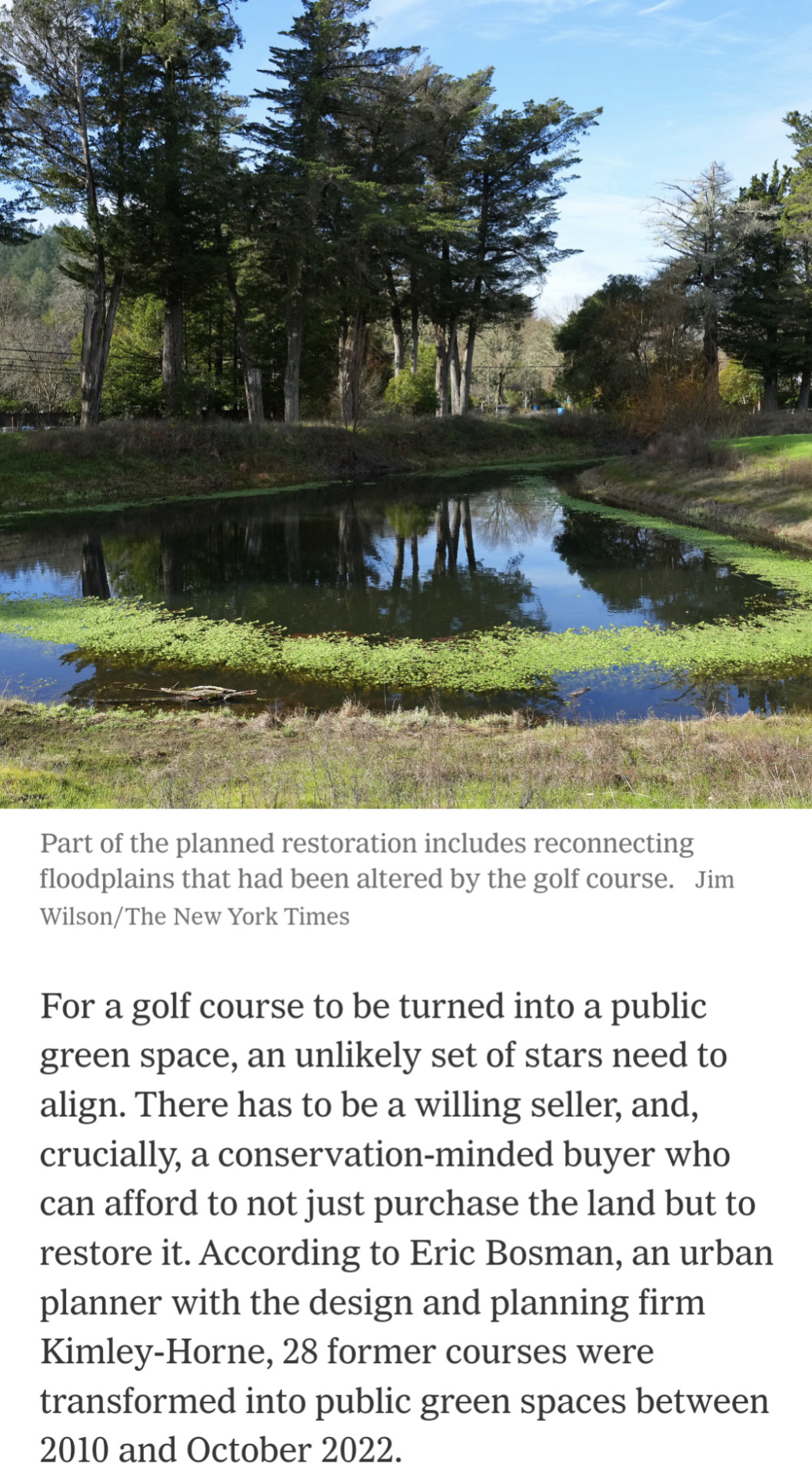
So lets be excited by the fact that people we don't even know about are working on the solutions we love to see! Turning a private space that needs thousands of gallons of water and fertilizer into an ecologically oriented public space is the future I want to see! I can say when I used to work in water conservation, we were getting a lot of clients that were golf courses that were interested in cutting their resource input, and they ended up planting a lot of natives! So even the golf courses that still operate could be making an effort.
So what I'd encourage you to do is see if there's any land or community trusts in your area, and see if you can get involved! Maybe even look into how to start one in your community! Through land trusts it's not always golf course conversions, but community gardens, solar fields, disaster adaptation, or low cost housing! (Here's a link to the first locator I found, but that doesn't mean if something isn't on here it doesn't exist in your area, do some digging!)
#solarpunk#sustainability#climate change#gardening#activism#hope#climate justice#news#new york times#golf courses#habitat#conservation
20K notes
·
View notes
Text
this flower is edible.



it's called a purple passion flower.
1 note
·
View note